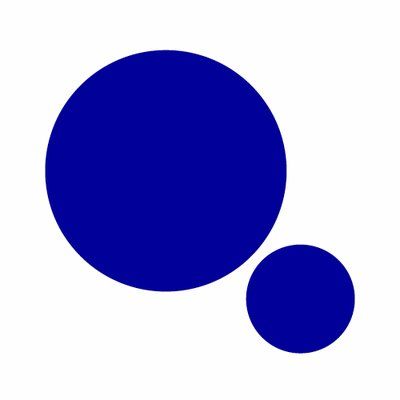预约演示
更新于:2025-05-07
p38 MAPK x TNF-α
更新于:2025-05-07
关联
4
项与 p38 MAPK x TNF-α 相关的药物作用机制 IL1抑制剂 [+2] |
在研机构- |
在研适应症- |
非在研适应症 |
最高研发阶段无进展 |
首次获批国家/地区- |
首次获批日期1800-01-20 |
作用机制 TNF-α抑制剂 [+1] |
在研机构- |
在研适应症- |
最高研发阶段无进展 |
首次获批国家/地区- |
首次获批日期1800-01-20 |
5
项与 p38 MAPK x TNF-α 相关的临床试验NCT02184338
Safety, Tolerability, and Pharmacokinetics of Single Rising Oral Doses of BIRB 1017 BS (5, 25, 100, 250, 500, and 800 mg) as a Solution in PEG 400 / 26% Ethanol Administered to Healthy Male Subjects. Placebo Controlled and Blinded at Each Dose Level
Study to assess safety, tolerability and pharmacokinetics of BIRB 1017 BS in single rising oral doses of 5 to 800 mg in a polyethylene glycol 400 (PEG 400) / 26% ethanol solution in healthy male subjects
开始日期2004-08-01 |
申办/合作机构 |
NCT00107055
REN-1654 in Sciatica: A Phase 2, Randomized, Double-Blind, Placebo Controlled, Multi-Center Study in Subjects With Pain Due to Lumbosacral Radiculopathy
The purpose of this study is to gain initial safety and efficacy data on the experimental agent REN-1654 in patients with pain that radiates down the leg(s), and is typical of sciatica (lumbosacral radiculopathy). These patients will usually have a herniated disc that is causing compression on the nerves coming out of the spinal column.
开始日期2003-12-01 |
申办/合作机构 |
NCT00099528
REN-1654 in Post-Herpetic Neuralgia: a Multi-Center, Placebo Controlled, 3-week Dose-Finding Study, With a 3-Week Active-Treatment Extension
The purpose of this study is to gain initial safety and efficacy data on the experimental agent REN-1654 in patients with painful post-herpetic neuralgia (PHN).
开始日期2003-08-01 |
申办/合作机构 |
100 项与 p38 MAPK x TNF-α 相关的临床结果
登录后查看更多信息
100 项与 p38 MAPK x TNF-α 相关的转化医学
登录后查看更多信息
0 项与 p38 MAPK x TNF-α 相关的专利(医药)
登录后查看更多信息
8,255
项与 p38 MAPK x TNF-α 相关的文献(医药)2025-12-31·Adipocyte
Disrupted adipokine secretion and inflammatory responses in human adipocyte hypertrophy
Article
作者: Griffiths, Helen R. ; Gao, Dan ; Bing, Chen
2025-12-01·Inflammation Research
Exploring macrophage and nerve interaction in endometriosis-associated pain: the inductive role of IL-33
Article
作者: Li, Jue ; Li, Nan ; Wang, Jianhong ; Wu, Zhijing ; Huang, Meihua ; Zhu, Li ; Zhang, Zhenzhen ; Wan, Guiping
2025-06-01·European Journal of Medicinal Chemistry
Semisynthesis and biological evaluation of 17-hydroxybrevianamide N derivatives as anti-inflammatory agents by mediating NF-κB and MAPK signaling pathways
Article
作者: Jing, Qian-Qian ; Guo, Yang-Yang ; Shao, Chang-Lun ; Gu, Yu-Cheng ; Xu, Wei-Feng ; Zhou, Tian-Yi ; Wei, Mei-Yan
37
项与 p38 MAPK x TNF-α 相关的新闻(医药)2025-04-22
·小药说药
-01-引言目前,肿瘤免疫治疗已成为第三代肿瘤治疗中最活跃的研究领域。以PD-1、CTLA-4和PD-L1为靶点的免疫检查点抑制(ICI)疗法在多种癌症的治疗中显示出卓越的效果,并且ICI的免疫疗法随着新的免疫检查点的开发(如TIM-3、LAG-3和TIGIT)而继续扩大。然而,ICI治疗的主要目的是维持先前已建立的抗肿瘤活性。相比之下,刺激性免疫治疗靶点,如CD40、ICOS、CD27、GITR、OX40和4-1BB则用激动剂来激活免疫,主要集中在免疫反应的早期阶段。这些分子最先起作用的很可能是CD40,因为它在抗原呈递过程中起着关键作用,间接地激活T细胞。最新研究显示,CD40激动剂不仅可直接激活树突状细胞(DC)、B细胞等免疫“指挥官”,还能重塑肿瘤微环境(TME),甚至让“冷肿瘤”变得对免疫治疗敏感。CD40激动剂在癌症免疫治疗中正展现出巨大的潜力。-02-一、CD40/CD40L的表达为了获得强大而特异的免疫反应,固有免疫系统和适应性免疫系统需要在多个环节上进行协调。免疫反应的许多关键阶段是由肿瘤坏死因子超家族(TNFSF)的配体及其受体介导的,包括CD40/CD40L。抗原特异性T细胞的有效抗原识别关键取决于特异性抗原呈递细胞(APC)的存在和功能,如B细胞和DC细胞。这些APC通常在细胞表面表达共刺激表面受体CD40(TNFRSF5)。CD40是一种48kda大小的Ⅰ型跨膜蛋白,是连接固有免疫和适应性免疫的重要免疫细胞通讯介质。CD40存在于血小板、B细胞和髓系细胞,但也存在于非造血细胞,如内皮细胞、成纤维细胞、平滑肌细胞甚至某些类型的肿瘤细胞。CD40的同源配体是CD154(TNFSF5/CD40L),一种39kda的II型跨膜蛋白。CD40L的表达通常可诱导并局限于造血系统的细胞,如血小板、粒细胞、活化T细胞、活化B细胞和活化自然杀伤细胞(NK)细胞,但内皮细胞和平滑肌细胞也有弱表达。-03- 二、CD40/CD40L的结构、组成及信号通路TNFRSF信号传导的结构已经比较明确,需要恰当的三维受体聚集和三聚体化。虽然TNFSF配体天然以三价功能单位存在,但受体通常分散分布在细胞表面。TNFSF配体以同源三聚体的形式自然地聚集在细胞表面,其中三个受体结合位点位于相邻单体之间的三个完全相同的缝隙处。关键的是,受体组装成功能性的三聚体复合物是通过天然配体单元的结合发生的。这些三聚体TNFSF配体与在其他细胞表面表达的相应受体的相互作用导致了非常精确的受体聚集。配体对细胞外受体的指令传递给邻近的受体细胞内结构域,然后是细胞内信号复合物的有序组装。TNFSF配体的三聚体结构和由此产生的受体簇是信号传递到细胞的前提。由于这种特殊的要求,一价和二价的结构在体内通常被证明是极低效的。与TNFRSF的其他成员一样,CD40是一种膜结合分子,可以通过细胞间直接接触被膜结合配体激活,也可以被溶液中的可溶性配体激活。多种下游分子和细胞反应进程已被证明受到CD40结合的调节。同源配体连接受体可诱导形成空间上明确的三聚体信号复合物,促进TNF受体相关因子(TRAFs)和NFκB激活剂-1(Act1)的招募。信号复合物的特定组成,主要取决于细胞类型,触发各种途径。例如,与TRAF6的结合主要激活JAK/Stat3通路,TRAF1/2诱导MKK/p38/ERK1/2信号传导,Act1在NFkB通路、JNK和PI3K信号传导中具有多种功能,并与TRAF3一起放大MKK/p38/ERK1/2信号。此外,根据特定的环境,CD40结合可以激活“经典”和非典型的NFkB通路。-04-三、CD40/CD40L的生物学作用CD40在单核细胞及其子代巨噬细胞和DC细胞以及B细胞上的表达在发挥免疫细胞的功能中起着重要作用。单核细胞是固有免疫前体细胞,具有很高的可塑性。它们具有分化为多种细胞类型的能力,如巨噬细胞、髓源性抑制细胞(MDSC)和DC细胞。CD40信号是单核细胞成熟过程的重要触发因素,主要驱动分化为M1谱系的巨噬细胞和DC细胞。CD40与DC细胞表面的结合促进了细胞因子和趋化因子的产生,诱导共刺激分子的表达,并促进抗原的交叉呈递。CD40L的主要功能之一是通过激活DC细胞来增强抗原对T细胞的提呈。这一步称为“许可”,通过上调表面蛋白如CD54和CD86,增加DC与T细胞的相互作用,从而激活后者。B细胞也是CD40L活性的靶点。在胸腺中,T细胞和B细胞之间广泛的串扰使之必须维持表达CD40的B细胞,从而保持自体反应性T细胞对B细胞的阴性选择。B细胞与CD4+T细胞的直接相互作用诱导T细胞表达CD40L,进而保护B细胞不受凋亡的影响。在这个功能中,CD40L通过激活PI3K/Akt提供一个生存信号,使活化的B细胞维持寿命并向浆细胞分化。抗原特异性B细胞通过CD40的稳态增殖和生存机制是通过抗凋亡成员Bcl-2家族的上调来维持的。事实上,CD40/CD40L系统的缺陷与B细胞的抗体类别转换以及细胞超突变的缺陷(hyper-IgM综合征)有关。B细胞与活化的表达CD40L的T细胞的相互作用也增加了MHC-II和CD80或CD86等共刺激分子的表达,并诱导B细胞中的Ig类别转换。活化的B细胞迁移到淋巴器官,在那里向T细胞呈递抗原,CD40激活的DC和B细胞通过释放免疫刺激性细胞因子和趋化因子如IL-6、IL-12p70、IFNγ、CXCL10和TNFα来支持免疫应答。此外,CD40活化的B细胞能够通过促进TNFα和IFNγ等细胞因子的分泌来诱导抗原特异性CD8+T细胞。一些研究证明,体外活化的表达CD40的B细胞是完全功能性抗原提呈的B细胞,随后用这些细胞进行过继细胞转移(ACT)治疗可提高抗肿瘤的疗效。-05-四、CD40/CD40L与肿瘤免疫数十年来,CD40/CD40L信号传导同步免疫反应的固有、细胞和体液分支的非凡能力激发了基础和临床研究的灵感。鉴于CD40的一般表达谱和生物学活性,人们已经做了许多尝试来探索CD40/CD40L信号在抗肿瘤免疫中的作用。CD40激活的DC细胞可用于癌症和传染性疾病(如结核病)的疫苗治疗。CD40信号的另一个有趣结果是表型从“另类活化”的M2型向抗肿瘤或“经典活化”的M1型的转变。这种M1/M2型的命名与肿瘤相关巨噬细胞(TAM)在肿瘤免疫治疗中特别相关。所谓的M1型的“经典活化”巨噬细胞产生于对GM-CSF以及IFNγ和LPS等刺激物的反应,通常被认为具有促炎性免疫反应和抗原交叉呈递的作用。M1型巨噬细胞主要与良好的抗肿瘤免疫反应相关。“另类活化”的M2型巨噬细胞是由于暴露于M-CSF和细胞因子(如IL-4和IL-10)而产生的,并参与组织修复和消除炎症状态。肿瘤相关的M2型被认为是癌症进展和转移的关键驱动因素。肿瘤和浸润性巨噬细胞的紧密相互作用强烈地塑造了肿瘤微环境,从而建立了炎症或促肿瘤的局部条件。有人提出,改善肿瘤内M2/M1谱系的平衡可以通过促进细胞毒性T细胞的浸润和激活来提高抗肿瘤免疫反应。这一点已经在多个模型中进行了描述,例如胰腺癌和小鼠异种移植胶质母细胞瘤模型。巨噬细胞复极化与CD40活化诱导CD206下调和CD54表达增加一致,表明巨噬细胞迁移能力的改变和有效激活。有趣的是,尽管CD40在许多组织中广泛表达,肿瘤细胞似乎更易受膜结合CD40L诱导的CD40杀伤。在B16黑色素瘤小鼠模型中,DC细胞上表达的膜结合CD40L可直接诱导CD40阳性肿瘤细胞凋亡,而非T细胞依赖的的细胞生长抑制活性则源于CD40刺激的IFNγ激活的巨噬细胞。这一现象的部分原因可能不是CD40信号的直接作用,而是对易感细胞类型死亡受体的二次上调。然而,抗CD40抗体Lucatumumab和dacetuzumab对B细胞恶性肿瘤有一定的临床效果,这可能归因于抗体介导的巨噬细胞吞噬和抗体依赖性细胞毒性(ADCC)的作用。结合CD40后,肿瘤细胞显示出DNA损伤的迹象,分泌促血管生成因子,如VEGF和IL-8,并且通常表现出衰老相关分泌表型(SASP)的状态,这是由于CD40诱导的NFκB通路的激活。-06-五、CD40激动剂的药物开发现状基于其独特的受体聚集模式,从TNFRSF产生的下游信号依赖于具有非常精确的结构和三维组成的激动剂化合物。由于CD40在抗肿瘤免疫反应中发挥关键作用,诱导CD40信号的各种策略已经被广泛地研究探索。大致可分为基于激动剂抗体的方法或基于CD40L的方法。目前,临床开发中有9种激动性人抗CD40抗体:4种IgG1抗体(APX005M、mitazalimab、2141-V11、SEA-CD40),2种IgG2抗体(selicrelumab和CDX-1140),1种IgG突变抗体(LVGN7409)和2种双特异性抗体(RO7300490、ABBV-428)。SelicrelumabSelicrelumab(也称为CP-870893,RO7009789)是一种完全人IgG2抗体,不依赖于通过Fc结构域交联来激活CD40。selicrelumab是临床试验中研究最广泛的CD40激动剂。最近,一项1期研究评估了selicrelumab在胰腺导管腺癌(PDAC)患者手术前使用或不使用化疗(nab-紫杉醇和吉西他滨)的新辅助治疗(NCT02588443)。接受selicrelumab单药治疗的患者的1年OS率(中位数+SE)分别为81.8%+11.8%,接受selicreumab联合化疗的患者为100%。Selicrelumab耐受性良好,相关不良事件(AE)大多较轻。此外,发现了selicrelumab诱导TME调节的证据,包括T细胞浸润、DC成熟、巨噬细胞复极化和肿瘤基质密度降低。CDX-1140CDX-140是一种人IgG2单克隆抗体,可驱动NF-kB激活。它结合CD40L结合位点之外的结构域,其激活机制独立于FcR交联。来自评估CDX-1140与抗PD-1治疗(pembrolizumab)联合使用或不使用的I期试验的数据显示,1.5 mg/kg CDX-1140联合200 mg pembrolizumab的剂量具有良好的安全性。观察到临床益处,尤其是在非小细胞肺癌(NSCLC)患者中,有80%的可评估患者具有稳定疾病(SD),而所有患者在之前的基于抗PD-1/L1的治疗中都经历了进展性疾病(PD)(NCT03329950)。APX005MAPX005M是一种人源化IgG1单克隆CD40抗体。通过Fc结构域中的点突变,APX005M增强了与FcγRIIb的结合亲和力,促进了CD40的交联并介导了ADCC。多个早期临床试验评估了APX005M与免疫疗法的联合应用。一项II期研究评估了APX005M与化疗(nab-paclitaxel和吉西他滨)联合使用或不使用抗PD-1(nivolumab)治疗转移性胰腺癌患者的疗效。研究表明,APX005并没有显著改善OS:在105名患者中,nivo/化疗达到了1年总生存期(OS)的主要终点,但APX005M/化疗或APX005M/Cnivo/化学均未达到。然而,APX005M/化疗后的存活率与更显著的肿瘤内CD4+T细胞浸润、循环分化的CD4+T细胞和APCs相关(NCT03214250)。最近,在随后的一项II期研究中,研究了APX005M与纳武单抗联合治疗抗PD-1疾病进展后的转移性黑色素瘤患者。客观反应率(ORR)为15%,中位反应持续时间至少为26个月。MitazalimabMitazalimab(也称为ADC-1013和JNJ-64457107)是一种靶向CD40的人IgG1单克隆抗体。它被设计为以FcγR依赖的方式与CD40结合,具有高效力和亲和力,这有利于肿瘤内给药,以减少剂量和不良免疫相关事件。在一项针对晚期实体瘤患者的I期研究中,静脉注射0.075-2mg/kg的Mitazalimab显示出可控的安全性。 2141-V112141-V11是一种完全人IgG1 CD40抗体,是selicrelumab的Fc优化版本,其中人IgG1 Fc经过5位点突变改造,可增强Fc与FcγRIIB的结合。一项I期研究评估了2141-V11在皮肤转移的实体瘤患者中的作用,在局部和远处病变中显示出抗肿瘤活性的迹象(NCT04059588)。另一项I期研究调查了2141-V11单药治疗对标准治疗无效的非肌肉浸润性癌症(NMIBC)患者的安全性和剂量(NCT05126472)。局部膀胱内给药用于减轻全身毒性。此外,在复发性胶质母细胞瘤患者的I期研究中,通过增强递送(CED)将2141-V11与免疫毒素(D2C7-IT)联合用于肿瘤内给药是安全且有一定疗效的:在入组的5名患者中,一名0.70 mg剂量的患者和两名2.0 mg剂量的患者观察到肿瘤响应的早期迹象。SEA-CD40SEA-CD40是一种全人源的非岩藻糖基化IgG1单克隆CD40抗体。非岩藻糖基化抗体增强了与FcγRIIIa受体的结合,可能提高了激动疗效。一项首次人体I期试验评估了晚期实体瘤和淋巴瘤患者的静脉注射SEA-CD40单一疗法。然而,SEA-CD40的抗肿瘤作用很小,在基底细胞癌患者中有1.8%(1/56)的部分反应,在滤泡性淋巴瘤患者中有1.8%(1/56)的完全反应。另一项研究检查了SEA-CD40联合化疗(nab紫杉醇和吉西他滨)和pembrolizumab治疗转移性PDAC患者的疗效。在10μg/kg和30μg/kg的剂量组中,分别有48%和38%的患者观察到了客观响应。两个剂量组的中位反应持续时间均为5.7个月(NCT02376699)。LVGN7409LVGN7409是一种IgG突变重组单克隆CD40抗体,具有工程Fc片段,可选择性结合FcγRIIB。LVGN7409以FcγRIIB交联依赖的方式激活CD40,因此在富含CD40和FcγRIIB的TME中发挥最佳作用。目前,有两项LVGN7409的I期研究。LVGN7409的第一项人体I期研究是在有或没有抗PD-1抗体(LVGN3616)和/或CD137激动剂抗体(LVGD6051)的情况下评估LVGN7407。静脉注射LVGN7409单药治疗在2 mg/kg以下具有良好的耐受性(NCT04635995)。RO7300490RO7300490是一种针对CD40和成纤维细胞激活蛋白(FAP)的新型双特异性抗体,后者在肿瘤组织中经常过表达,在健康组织中表达较低。因此,RO7300490能够直接重塑TME,同时可能避免与全身CD40激活相关的毒性。目前,一项I期研究正在评估RO7300490在晚期实体瘤患者中使用或不使用atezolizumab的疗效(NCT04857138)。ABBV-428ABBV-428是另一种双特异性抗体,旨在通过与肿瘤抗原间皮素相互作用实现CD40的局部激活。第一项人体I期研究评估了ABBV-428在晚期实体瘤患者中使用或不使用纳武单抗的情况(NCT02955251)。根据接受ABBV-428单药治疗的患者的中期数据,36%的患者在推荐的II期剂量(3.6 mg/kg)下的最佳临床反应为SD。未观察到CD40激动剂的毒性。然而,ABBV-428产生的临床活性很小,这可以用肿瘤细胞上间皮素的低表达来解释,这将限制肿瘤的可及性和ABBV-428对CD40的交联。-07-结语增强抗肿瘤免疫应答的策略是肿瘤学最有希望的新进展之一,而TNFRSF成员,如CD40,是其中重要的靶点。由于产生高效TNF-R-SF信号的独特要求,激动剂分子必须产生非常精确的受体结构和三维结构。虽然已经探索了诱导CD40信号的各种策略,但是20年来有限的临床成功表明需要探索新的方法,这种信号通路激动剂的真正威力尚未在临床开发中充分释放出来。目前CD40激动剂临床疗效有限的原因归咎于抗体的结构和功能特性,包括每个分子只有两个靶结合位点,不适合刺激TNFRSF。由于这一信号通路具有广泛的靶向性,因此也可与其他药物和疗法联合应用。相信不久的将来会产生更多令人鼓舞的临床数据,提高治疗效果,并拓宽更多癌症患者的治疗选择。参考资料:1.Concepts for agonistic targeting of CD40 in immuno-oncology. Hum Vaccin Immunother. 2020;16(2):377-387.2. Harnessing the Potential of CD40 Agonism in Cancer Therapy. Cytokine Growth Factor Rev. 2023 Dec 4;75:40–56公众号内回复“ADC”或扫描下方图片中的二维码免费下载《抗体偶联药物:从基础到临床》的PDF格式电子书!公众号已建立“小药说药专业交流群”微信行业交流群以及读者交流群,扫描下方小编二维码加入,入行业群请主动告知姓名、工作单位和职务。
免疫疗法
2025-03-29
·精准药物
白细胞介素-1受体相关激酶4(IRAK4)是先天免疫信号通路的关键调控因子,其激酶活性和支架功能双重作用导致传统抑制剂难以完全阻断炎症反应。近日,清华大学饶燏团队在《Chinese Chemical Letters》发表了题为 “Developing potent anti-inflammatory IRAK4-targeting PROTACs with simplified CRBN ligands ”的研究论文,报道了一种基于简化CRBN配体的IRAK4靶向PROTAC降解剂LZ-07,该化合物DC₅₀为1.14 nM,在抗炎活性上优于临床Ⅱ期的IRAK4降解剂KT-474,为自身免疫疾病治疗提供新的策略。IRAK4通过Toll样受体(TLR)和IL-1受体(IL-1R)信号通路激活NF-κB、p38、IRF5/7和MAPK等信号通路,驱动炎症因子释放。即使IRAK4的激酶活性被抑制,其支架功能仍可维持炎症信号传递(图1A)。临床IRAK4抑制剂(如PF-06650833)仅靶向激酶活性,无法阻断支架功能,导致抗炎效果受限。PROTAC技术通过降解IRAK4蛋白可同时消除其酶活和非酶活功能,对炎症的抑制更彻底。目前临床上现有IRAK4靶向PROTAC降解剂KT-474(图1B)的合成步骤较为复杂,从简单易得的商业化原料开始合成,需要经过19步反应。因此,开发合成路线更简洁、同时具备高效抗炎活性的IRAK4降解剂,仍具有重要的研究与应用价值。图1. IRAK4信号通路及代表性的IRAK靶向PROTACs。(A)IRAK4靶向小分子抑制剂和PROTACs的作用机制。(B)代表性的IRAK4靶向PROTACs。针对以上问题,研究团队进行了三个阶段的PROTAC库构建与筛选工作(图2A-C),最终获得高效IRAK4靶向PROTAC降解剂LZ-07,具体研究如下:1.首轮筛选:基于传统E3泛素连接酶配体(CRBN/VHL),以及不同类型的IRAK4配体,结合不同长度的刚性和柔性linker构建了第一轮靶向IRAK4的PROTAC分子库,并结合高内涵成像筛选技术,快速发现了先导分子PL-01,但降解效率仅26%。2.二轮优化对第一轮建库筛选到的高效IRAK4配体进行了结构优化,提高了合成的可及性,并结合度胺类CRBN配体进行了第二轮建库,获得PL-18(100 nM蛋白降解超过75%)。3.三轮优化:针对度胺类CRBN配体可能的IKZF1和IKZF3等脱靶效应,引入结构简化的CRBN配体,最终获得具有优异降解活性的LZ-07(DC₅₀ = 1.14 nM)及LZ-22(10 nM诱导超过80% IRAK4蛋白降解)。图2. IRAK4靶向PROTAC库的设计与构建。(A)第一代IRAK4靶向PROTAC库。(B)第二代IRAK4靶向PROTAC库。(C)使用简化的CRBN配体构建的第三代IRAK4靶向PROTAC库。接下来,研究团队对LZ-07的降解效率和降解机制进行了研究,通过WB实验发现LZ-07能够浓度和时间依赖性的降解IRAK4蛋白(图3A-C),在DOHH2和TMD8两种细胞的DC50值分别为1.14和2.7 nM,最大降解超过90%。Rescue实验进一步证实,IRAK4的降解是通过CRBN介导的蛋白酶体途径实现(图3D)。图3. LZ-07的降解效率评估和降解机制研究。(A)用LZ-07和KT-474处理TMD8细胞16小时后,IRAK4水平的免疫印迹分析。数据以均值±标准差(SD)表示(n = 3)。(B)用LZ-07和KT-474处理DOHH2细胞16小时后,IRAK4水平的免疫印迹分析。数据以均值±标准差(SD)表示(n = 3)。(C)用50 nmol/L的LZ-07处理TMD8细胞不同时间点后,IRAK4的免疫印迹分析。(D)在TMD8细胞中,预先用DMSO、MG132(0.5 μmol/L)、MLN4924(0.5 μmol/L)、pomalidomide(1 μmol/L)和抑制剂compound E(1 μmol/L)处理2小时后,再用LZ-07(30 nmol/L)处理8小时,IRAK4水平的免疫印迹分析。最后,研究团队在PBMC细胞中对LZ-07的抗炎效果进行了研究,发现LZ-07的抗炎效果要优于KT-474(图4A-D),并且具有很好的安全性(图4E)。图4. LZ-07和KT-474在健康供体(供体ID:P122071008C)来源的外周血单核细胞(PBMCs)中的抗炎效果评估。 PBMCs先用LZ-07和KT-474预处理2小时,随后用10μL脂多糖(LPS,100 ng/mL)刺激24小时。采用ELISA法测定细胞因子(IL-10、IL-6、IL-1β和TNF-α)的水平。(A-D)分别显示LZ-07和KT-474对IL-10、IL-6、TNF-α和IL-1β水平的抑制作用。数据以均值±标准差(SD)表示(n=2)。最终的半数抑制浓度(IC50)由GraphPad Prism 9生成。(E)LZ-07和KT-474在两名健康供体(供体ID:P122071008C和Y1828)来源的PBMCs中的细胞毒性评估。(F)用LZ-07和KT-474处理PBMCs细胞16小时后,IRAK4水平的免疫印迹分析。通过比较LZ-07与KT-474在PBMC细胞中的降解表现,研究发现KT-474对IRAK4的降解效率显著优于LZ-07,然而在抑制多种炎症相关细胞因子分泌方面,LZ-07却表现出更强的活性。研究团队推测,这可能归因于LZ-07保留了一定的PI3Kδ抑制活性(图5),而PI3Kδ已知与炎症反应密切相关。实验结果显示,LZ-07对PI3Kδ的抑制活性为IC₅₀ = 92 nM,这解释了LZ-07更优的抗炎效果。图5. 经LZ-07处理后对PI3Kδ的激酶抑制效果,以PI103作为阳性对照。数据以均值±标准差(SD)表示(n = 2)综上,LZ-07是基于简化CRBN配体开发的IRAK4高效降解剂,相较于KT-474具有其独特优势(图6),其合成更为简便,抗炎效果更强,并且能避免传统度胺类CRBN配体带来的脱靶风险,为红斑狼疮、特应性皮炎等自身免疫疾病提供全新治疗思路。 图6. LZ-07和KT-474在IRAK4蛋白降解能力、抗炎效果以及合成难度上的对比。本文作者:LZ声明:发表/转载本文仅仅是出于传播信息的需要,并不意味着代表本公众号观点或证实其内容的真实性。据此内容作出的任何判断,后果自负。若有侵权,告知必删!长按关注本公众号 粉丝群/投稿/授权/广告等请联系公众号助手 觉得本文好看,请点这里↓
蛋白降解靶向嵌合体临床结果临床1期临床2期
2025-03-29
·医药速览
前言Toll样受体(TLRs)是一种先天免疫受体,直接或间接负责检测病原体相关分子模式(PAMP),并通过激活先天和适应性免疫途径对其作出反应。TLRs是抵御微生物病原体的第一道防线,TLR可以分为细胞表面和内体亚家族,识别不同的PAMP,并激活常见和特定的信号通路以形成免疫反应。尽管具有保护功能,TLR的异常反应仍会导致炎症和自身免疫性疾病。了解TLR激活和调节机制之间的微妙平衡对于破译它们在免疫防御和疾病发病机制中的双重作用至关重要。此外,天然存在和合成的TLR激动剂可以利用这些内源性免疫信号通路来增强和调节疫苗反应,从而使其成为优良的疫苗佐剂。这不仅对开发针对传染病的疫苗具有重要意义,而且对针对癌症、过敏、阿尔茨海默病和其他疾病的免疫疗法也具有重要意义。TLR的发现史1989年,Charles A. Janeway提出了一个突破性的假设,表示先天免疫系统具有通过主要在哨兵细胞上表达的受体检测微生物感染的显著能力,称之为“模式识别受体(PRRs)”。这些受体识别称为“病原体相关分子模式”的不同分子结构,这些结构在病原体中广泛表达,对其生存至关重要,但在宿主细胞中明显缺失。这使得PRRs能够有效地区分自我和非自我,并启动先天免疫反应。1996年,Hoffmann等人进行的一项研究证实了Janeway的假设。该研究表明,果蝇携带一种名为“Toll”的受体突变,由于抗真菌肽的诱导缺陷,对真菌感染表现出更高的易感性。随后,Janeway和Medzhitov的进一步探索鉴定出了Toll的人类同源物,最初称为hToll,后来被确认为Toll样受体4(TLR4)。TLR4的发现揭示了它通过激活转录因子核因子κB(NF-κB)诱导先天反应的能力,包括产生促炎细胞因子和表达共刺激分子。随后,在人类和小鼠中分别鉴定出10个和12个TLR,每个TLR都能识别多种PAMP。TLR1至TLR9在两个物种中都是保守的;由于逆转录病毒衍生的DNA插入,小鼠TLR10不起作用;TLR11、TLR12和TLR13不存在于人类基因组中。TLRs的发现推翻了人们最早的认识,即先天免疫系统识别病原体是非特异性的。TLR的结构和信号通路TLR属于I型跨膜蛋白,包括负责PAMP识别的富含亮氨酸重复序列(LRR)的外结构域、跨膜区和激活下游信号通路的细胞质Toll-IL-1受体(TIR)结构域。TLR分为细胞表面和内体亚家族:细胞表面TLR(TLR1、TLR2、TLR4和TLR5)识别脂质和蛋白质成分,而内体TLR(TLR3、TLR7、TLR8、TLR9和TLR13)专门用于核酸检测;即脂多糖(TLR4)、脂肽(TLR2与TLR6或TLR1)、鞭毛蛋白(TLR5)、单链RNA(TLR7/8)、双链RNA(TLR3)和含CpG基序的DNA(TLR9)。TLRs激活的免疫反应类型由特定TLR及其衔接蛋白激活的信号通路决定。一般来说,大多数TLR途径导致Th1免疫反应,但TLR2除外,可能由于TLR2配体的多样性,TLR2可以诱导促炎和抗炎途径,导致Th1、Th0或Th2免疫反应。除TLR3外,大多数TLR通过MyD88发挥作用。TLR激活后,MyD88募集由IL1受体相关激酶(IRAK)1、IRAK2和IRAK 4组成的寡聚复合物,并激活MyD88 TNF受体相关因子6(TRAF6)。活化的TRAF6随后触发核因子κB(NF-κB)和丝裂原活化蛋白激酶(MAPK)途径,从而诱导促炎细胞因子,如IL-12和TNF-α。TLR7和TLR9可以激活TRAF3磷酸化干扰素调节因子7(IRF7),从而产生IFN-α。此外,TLR3和TLR4已被证明通过其TRIF衔接蛋白募集TRAF3来诱导IFN-β的产生,从而激活IRF3。I型IFN应答可诱导强Th1细胞/细胞毒性T细胞(CTL)应答,该应答对鉴定和清除感染或癌细胞很重要。TLR2受体主要诱导以高IL-10产生和低IL-12为特征的强Th2免疫反应。TLR并不专门触发Th1或Th2途径,而是可以影响多种途径。正是信号事件的平衡决定了免疫偏向。例如,一项研究表明,TLR4和TLR2激动剂的激活可以通过p38 MAPK和ERK1/2-FOS途径刺激信号传导,分别导致IL-12或IL-10的产生;然而,TLR4在比TLR2更高的阈值下诱导p38 MAPK信号传导,而TLR2在比TLR4更高的阈下诱导ERK1/2信号传导,导致免疫极化。TLRs在适应性免疫中的作用TLRs协调了从免疫细胞迁移到增强抗体亲和力成熟的许多功能。TLRs作为危险信号传感器,增加了免疫细胞向疫苗给药部位的运输。TLR参与可增强I类和II类MHC分子的抗原捕获、处理和呈递。某些特定类型的TLR可以不同程度地影响抗原的交叉呈递,从而TLR3或TLR4,而不是TLR2或TLR7/8配体,减少CD8 +T细胞对抗原的摄取和交叉呈递。TLR激活也可导致共刺激分子(如CD80和CD86)的上调,这对APC启动幼稚T细胞至关重要。DC细胞的TLR在自我/非自我抗原识别以及是产生免疫反应还是免疫耐受中起着关键作用。不同类型的APC表达不同的TLR,例如髓系DC表达TLR2和TLR4,而浆细胞样DC(pDC)表达TRL7和TLR9。因此,TLR对不同DC谱系的优先激活可以影响随后的免疫偏向。与小鼠相比,TLR在B细胞上的表达在人类中更为有限,人类主要表达TLR 2、7、9、10,TLR2配体需要通过B细胞受体(BCR)和TLR7的交联进行额外增敏,TLR7需要1型干扰素(IFN)引发。这些TLR激动剂在体外诱导B细胞的增殖、活化和分化。最初,人们认为TLRs只促进B细胞的卵泡外反应,其特征是快速产生低亲和力抗体;然而,最近的研究表明,TLRs也可以增强生发中心反应,从而产生高亲和力抗体。TLR与BCR协同作用,诱导类转换重组和抗体反应的成熟。TLR4还增强了B细胞向引流淋巴结的迁移,并在此过程中加快了抗体类别的转换。不适宜的B细胞TLR信号传导与自身反应性B细胞和自身免疫性疾病的产生有关;因此,在疫苗配方中避免过度的TLR刺激非常重要。TLR也已被证明能增强各种不同的T细胞亚群。几项研究表明,TLRs可以作为CD8+T细胞的共刺激分子,促进细胞增殖/存活、效应器功能、细胞因子产生和记忆形成的增加。TLRs在Treg细胞中的作用仍然存在争议。几项研究表明,TLR2激动剂可诱导Treg抑制活性的暂时丧失;而其他研究表明,尽管TLR2激动剂可增加抗原特异性增殖,但Treg细胞仍保留其抑制功能。TLR在疫苗佐剂中的应用天然存在和合成的TLR激动剂可以利用这些内源性免疫信号通路来增强和调节疫苗反应,从而使其成为优良的疫苗佐剂。疫苗配方中使用的TLR激动剂有多种形式,从脂肽到单链DNA和RNA。下面介绍TLR佐剂的主要类别。TLR2TLR2在多种细胞表面表达,包括单核细胞、巨噬细胞、内皮细胞、上皮细胞、自然杀伤细胞、树突状细胞、髓系抑制细胞、血小板和肥大细胞。TLR2识别的PAMP库是最广泛的,因为它能够与TLR1和TLR6(以及人类中的TLR10)形成异二聚体。TLR2佐剂的范围很广,包括合成脂肽(PAM3CSK4和PAM2CSK4)、阿拉伯甘露糖脂、脂磷壁酸、GPI膜锚定物、酵母多糖和肽聚糖。近年来TLR2研究的主要趋势包括发现小型合成TLR2激动剂、改进传统TLR2激动物的特性以及TLR2与疫苗抗原的生物偶联。例如,XS15(PAM3CS-GDPKHPKSF)是一种新的基于PAM3CS的TLR-1/2激动剂,其中PAM3CSK4的四赖氨酸(K4)被九肽(GDPKHPKSF)取代,以改变偶联物的水溶性,不仅促进摄取,而且易于纯化。使用TLR2激动剂作为佐剂的局限性包括大多数配体的大小、复杂性和疏水性。TLR3TLR3是一种细胞内识别系统,对病毒核酸(dsRNA、ssRNA和ssDNA)以及内源性双链RNA作出反应。已经开发了许多TLR3激动剂,如RGC100和ARNAX,一种合成的DNA-RNA杂交化合物。然而,在过去两年中,研究人员又回到了使用传统的dsRNA模拟配体,如poly IC,重点是改进其递送模式和新的疾病应用。TLR4TLR4是TLR家族中研究最多的成员,它识别脂多糖(LPS)。TLR4位于质膜上,主要在髓系细胞上表达,而pDCs和幼稚B细胞不表达。TLR4通过其共受体骨髓分化因子-2(MD-2)和CD14识别LPS。最近关于TLR4激动剂的工作集中在修饰产物的开发和评估上,如单磷酸脂质A(MPLA)和吡喃葡萄糖脂质A(GLA),它们在结构上与LPS相关,但没有高致热原性并保持强免疫增强特性,从而增加了其临床应用的可行性。TLR5TLR5识别鞭毛蛋白,并在上皮细胞和免疫细胞(如巨噬细胞和未成熟DC)上表达,通过MyD88依赖性信号通路产生免疫反应。最近关于TLR5激动剂的工作主要集中在提高耐受性上。不幸的是,鞭毛蛋白会诱导不必要的过度反应原性,作为一种蛋白质,它可以诱导针对自身的抗体,干扰其作为佐剂的功能。有研究通过从鞭毛蛋白中去除B细胞表位区域解决了这一问题,脱免疫的鞭毛蛋白保留了其TLR5佐剂活性。TLR7/8TLR7和TLR8位于免疫细胞的内涵体膜上。TLR7主要在pDC和B细胞中表达,而TLR8在髓系树突状细胞、单核细胞中表达,在pDC中表达程度较低。TLR7/8识别单链核糖核酸(ssRNA),并通过MyD88依赖性途径发出信号。在天然配体中,富含腺苷和尿苷的寡核苷酸(ORN)能够激活TLR8,而对TLR7没有任何影响,而富含鸟苷的ORN激活TLR7和TLR8依赖性信号传导。TLR7以单体形式存在,并在配体存在下二聚,而TLR8以天然存在的弱二聚体存在,在配体结合时发生构象变化。目前已发现15种以上的新型杂环分子,如咪唑喹啉、蝶呤、嘧啶、吡啶嘧啶、吡咯嘧啶和苯并咪唑,被鉴定为TLR7/8激动剂。TLR7/8激动剂的一个常见缺点是反应原性,近年来,有大量研究试图克服这些副作用。将TLR7/8激动剂封装在基于阳离子DOEPC的脂质体制剂纳米颗粒中,或将这些小分子共价连接到超支化聚合物上,可以避免其有害的系统反应,同时保持其对体液免疫的影响。TLR9TLR9在细胞内定位于内涵体膜中,识别细菌和病毒DNA的单链非甲基化CpG寡核苷酸。TLR9在免疫细胞上表达,如树突状细胞、巨噬细胞、自然杀伤细胞和其他APC。合成CpG序列可用作TLR9激动剂,以增强疫苗的免疫反应,并且每种独特的序列变异组合已被证明具有不同的结构和生物学特性。TLR9激动剂在过去两年中的最新发展主要集中在CpG向细胞的有效递送和摄取上。例如,一项研究介绍了一种将CpG-ODN偶联到新型阳离子脂质体上的新方法,该复合物能够在低抗原和佐剂剂量下诱导强烈的免疫反应。组合TLR佐剂将不同TLR的激动剂组合在单一疫苗中产生协同效应,可以驱动强大的疫苗免疫反应。例如,包含1V270(TLR7激动剂)和2B182C(TLR4激动剂)的脂质体佐剂诱导了针对流感的平衡的抗HA和抗NA IgG1和IgG2a反应,而没有Th1促炎反应常见的过度反应原性。类似地,一项研究评估了卵清蛋白(OVA)与两到三种TLR配体的十种独特组合的共包封,包括Pam3CSK4(TLR2激动剂)、MPLA(TLR4激动剂),咪喹莫特(TLR7/8激动剂)和CpG(TLR9激动剂),而三重组合以总体平衡的Th1/Th2应答促进抗原特异性抗体滴度。因此,TLR佐剂的组合可以提供广泛的定制免疫反应。TLR激动剂与其他PAMP如NOD2和巨噬细胞诱导型Ca²的组合⁺-依赖性凝集素受体(Mincle)配体也很有前景。共价连接CL239(TLR7激动剂)和胞壁酰二肽(NOD2激动剂),并将双激动剂作为纳米颗粒与NP-p24 HIV疫苗结合,协同作用增强了对小鼠的保护。小结TLR的发现大大增强了我们对先天免疫反应分子机制的理解,为创新的治疗方法和疫苗开发奠定了基础。靶向TLR的合成激动剂已被证明是非常有利的佐剂,相反,TLR拮抗剂对于减轻过度免疫反应具有重要价值,从而有助于治疗以TLR异常激活为特征的自身免疫性疾病。然而,关于单个TLR的特异性以及与其他PRR的潜在冗余问题仍然存在。微生物核酸被内体TLR和细胞质PRR识别,这确保了先天免疫系统能够通过不同细胞隔室中的多个PRR对各种病原体做出有效反应。TLR和PRR之间的相互作用是强有力地诱导免疫反应所必需的,这些PRR的激动剂的组合通过激活DC协同增强佐剂疗效。鉴于微生物病原体含有多种PAMP,这种协同作用可能在感染过程中自然发生,这可能解释了为什么与疫苗接种相比,自然感染通常会诱导更强的适应性免疫反应。然而,这种协同作用也可能与炎症性疾病的加重有关。因此,了解TLR和其他PRR之间的协同作用和相互作用机制对于开发先进的疫苗佐剂以及控制TLR相关疾病的药物至关重要。参考文献:1.Toll-like receptor (TLR) agonists as a driving force behind next-generation vaccine adjuvants and cancer therapeutics. Curr Opin Chem Biol.2022 Oct;70:1021722. Decoding Toll-like receptors: Recent insights and perspectives in innate immunity. Immunity.2024 Apr 9;57(4):649-673.推文用于传递知识,如因版权等有疑问,请于本文刊发30日内联系医药速览。原创内容未经授权,禁止转载至其他平台。有问题可发邮件至yong_wang@pku.edu.cn获取更多信息。©2021 医药速览 保留所有权利往期链接“小小疫苗”养成记 | 医药公司管线盘点 人人学懂免疫学| 人人学懂免疫学(语音版) 综述文章解读 | 文献略读 | 医学科普|医药前沿笔记PROTAC技术| 抗体药物| 抗体药物偶联-ADC核酸疫苗 | CAR技术| 化学生物学温馨提示医药速览公众号目前已经有近12个交流群(好学,有趣且奔波于医药圈人才聚集于此)。进群加作者微信(yiyaoxueshu666)或者扫描公众号二维码添加作者,备注“姓名/昵称-企业/高校-具体研究领域/专业”,此群仅为科研交流群,非诚勿扰。简单操作即可星标⭐️医药速览,第一时间收到我们的推送①点击标题下方“医药速览” ②至右上角“...” ③点击“设为星标
疫苗免疫疗法临床研究
分析
对领域进行一次全面的分析。
登录
或

Eureka LS:
全新生物医药AI Agent 覆盖科研全链路,让突破性发现快人一步
立即开始免费试用!
智慧芽新药情报库是智慧芽专为生命科学人士构建的基于AI的创新药情报平台,助您全方位提升您的研发与决策效率。
立即开始数据试用!
智慧芽新药库数据也通过智慧芽数据服务平台,以API或者数据包形式对外开放,助您更加充分利用智慧芽新药情报信息。
生物序列数据库
生物药研发创新
免费使用
化学结构数据库
小分子化药研发创新
免费使用


